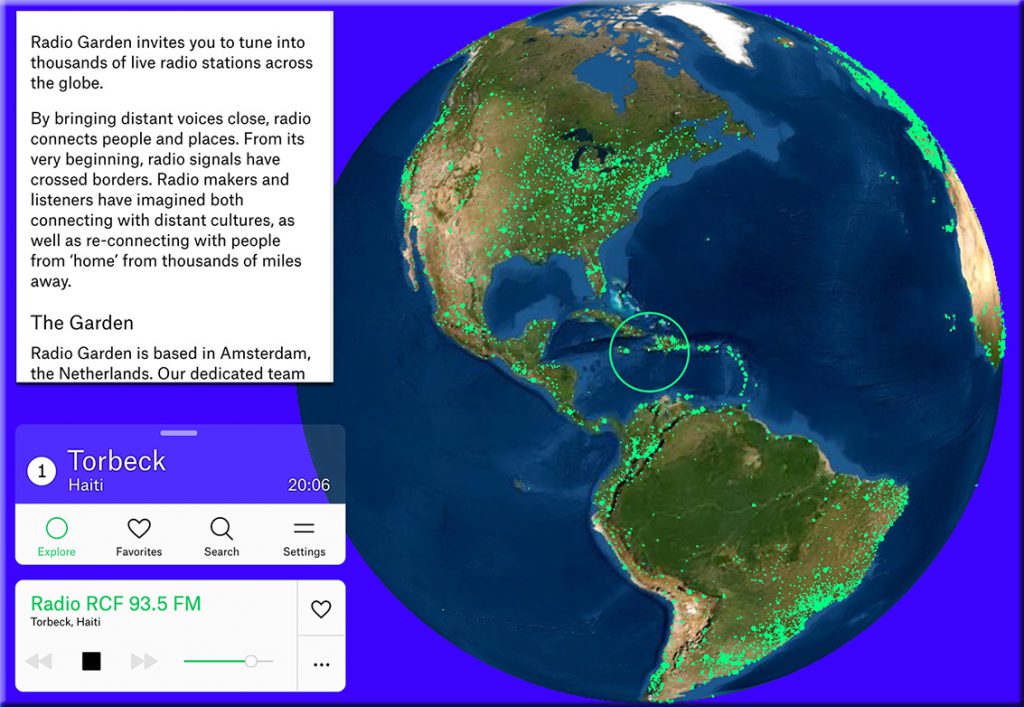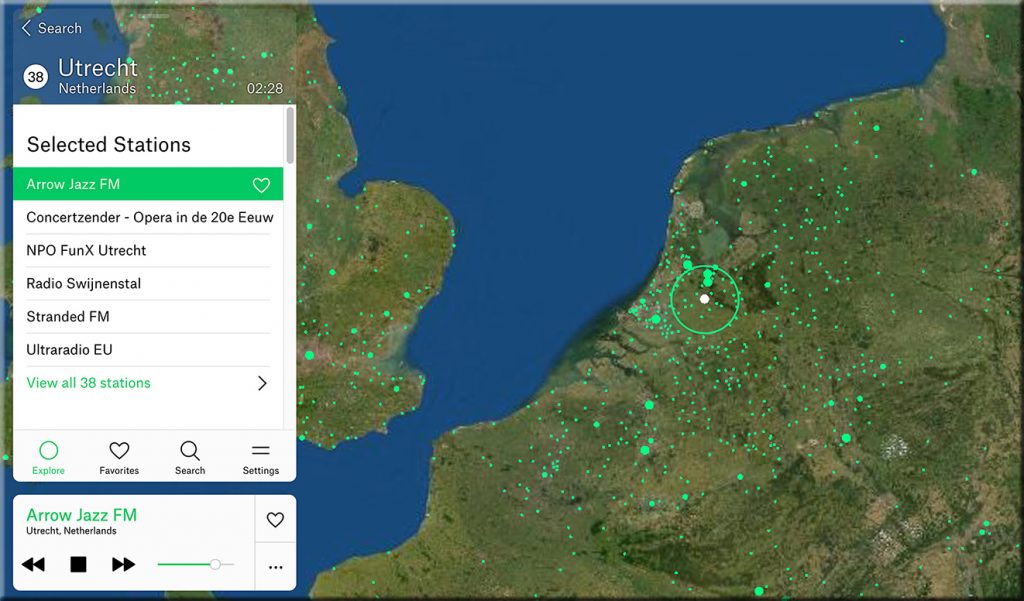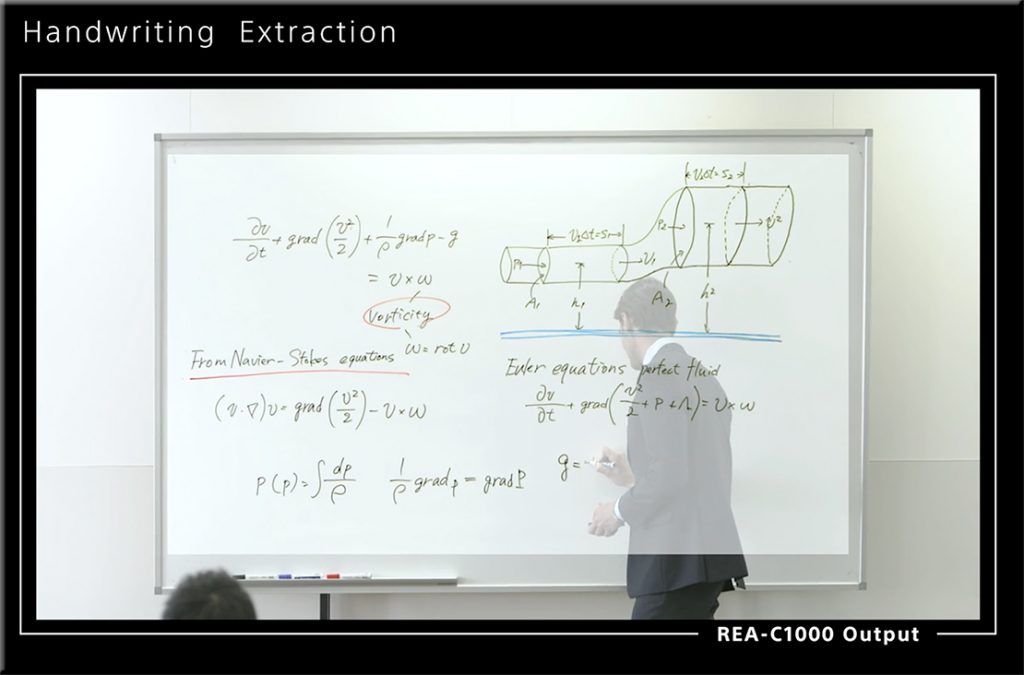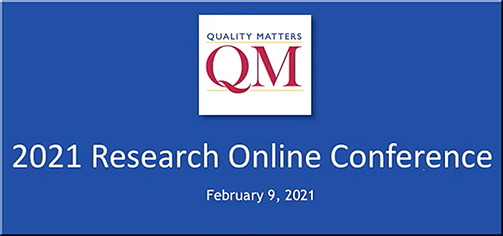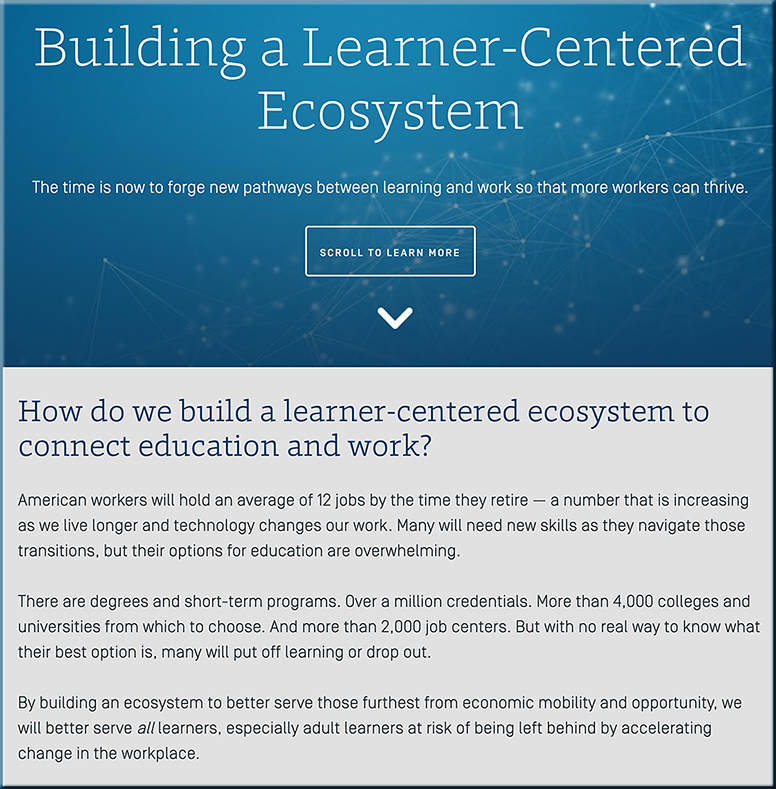From DSC:
Talk about streams of content! Whew!

I received an email from Adobe that was entitled, “This week on Adobe Live: Graphic Design.” (I subscribe to their Adobe Creative Cloud.) Inside the email, I saw and clicked on the following:
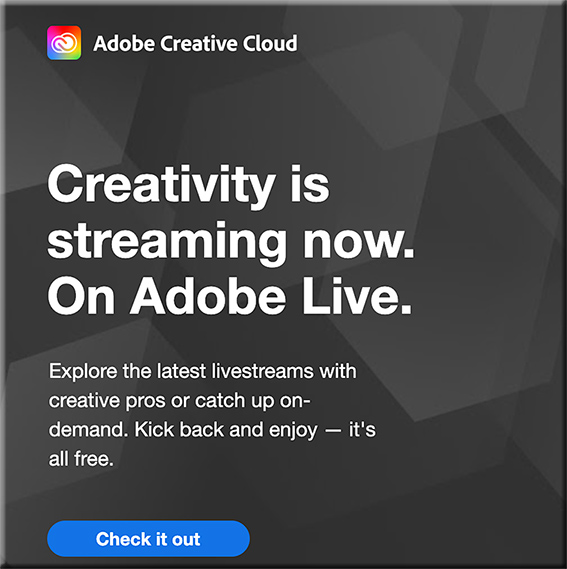
Below are some of the screenshots I took of this incredible service! Wow!
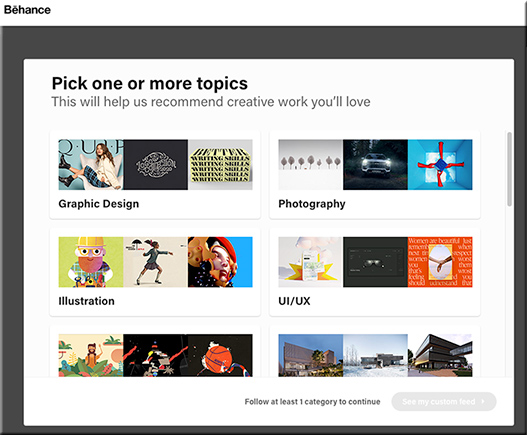
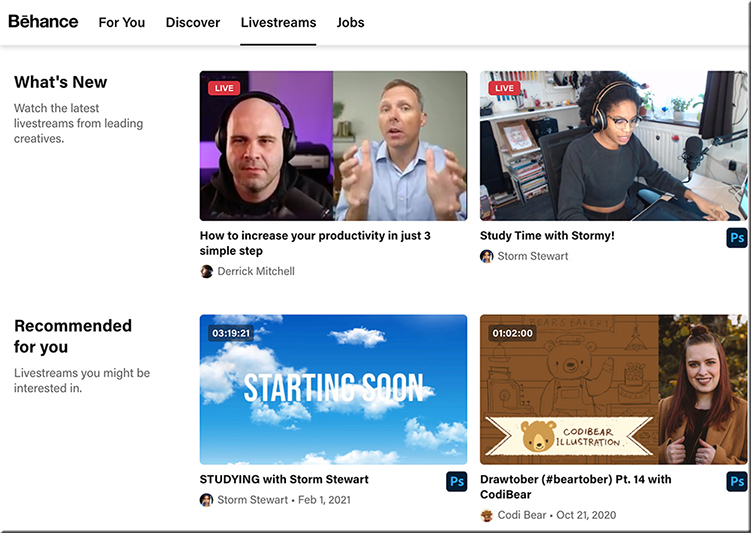


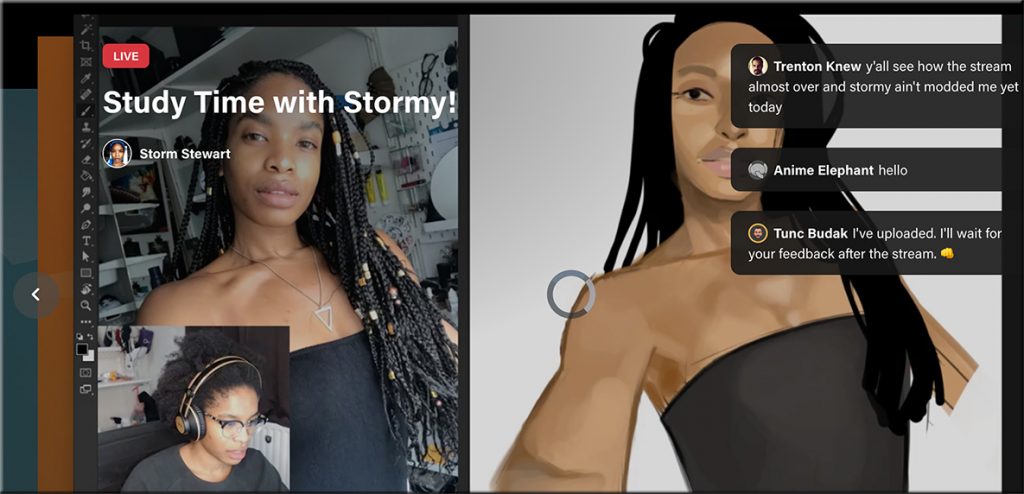

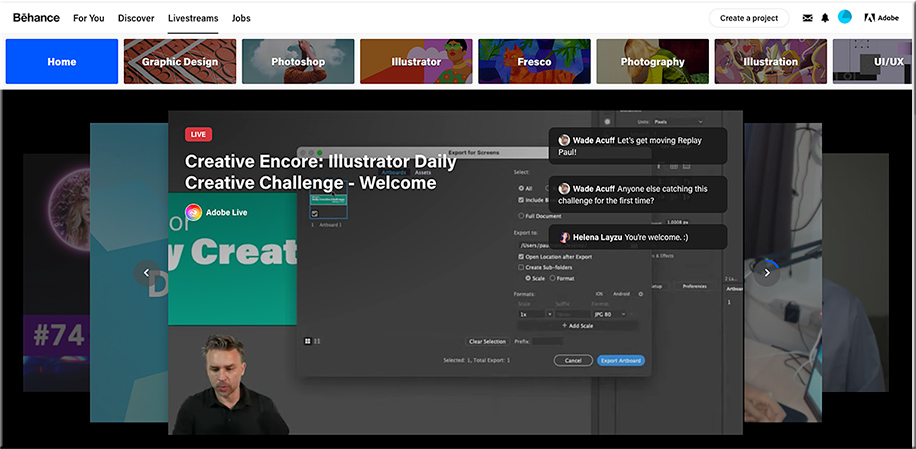

From DSC:
So Abobe — via Behance — is already doing several pieces of the “Learning from the Living [Class] Room” vision. I knew of Behance…but I didn’t realize the magnitude of what they’ve been working on and what they’re currently delivering. Very sharp indeed!
Churches are doing this as well — one device has the presenter/preacher on it (such as a larger “TV”), while a second device is used to communicate with each other in real-time.










